Michael Greger's Blog, page 15
May 28, 2024
Does Marijuana Affect Weight Gain or Bone Density?
Are the apparent adverse effects of heavy cannabis use on the bone just due to users being thinner?
It’s been recognized for decades that cigarette smoking can have “a major effect” on bone health, “increasing the lifetime risk of hip fracture by about half.” It also appears to impair bone healing, so much so that surgeons ask if they should discriminate against smokers because their bone and wound-healing complication rates are so high. What about smoking marijuana?
As I discuss in my video Effects of Marijuana on Weight Gain and Bone Density, “There is accumulating evidence to suggest that cannabinoids [cannabis compounds] and their receptors play important roles in bone metabolism by regulating bone mass, bone loss, and bone cell function.” Okay, but are they “friend or foe?”
“Results from research on cannabinoids and bone mineral density in rodent models have been inconsistent. Some studies show increased bone formation, others have demonstrated accelerated bone loss, and yet others have shown no association. This variation in results may be due [in part] to differences in the mouse strain, sex, age…” If you can’t even extrapolate from one mouse to another, how can you extrapolate from mice to human beings?
What if you just measure cannabis use and bone mineral density in people? Researchers tested thousands of adults and asked them about their cannabis use. There did not appear to be any link between the two, which is a relief. However, in this study, “heavy” cannabis use was defined as just five or more days of use in the previous 30 days. The researchers didn’t ask beyond that, so, theoretically, someone who smoked just five joints in their entire life could be categorized as a “heavy user” if they happened to use it five times in the last four weeks.
How about cannabis use on 5,000 separate occasions over a lifetime? Now that’s a heavy user—decades of regular use. In that case, heavy use was “associated with low bone mineral density and an increased risk of fractures”—about double the fracture rate presumably due to lower bone density in the hip and spine, although heavy cannabis users were also thinner on average, and thinner people have lighter bones.
Hip fracture risk goes down as our weight goes up. Nearly half of underweight women have osteoporosis, but less than 1 percent of obese women do, which makes total sense. Being obese forces our body to make our bones stronger to carry around all of that extra weight. That’s why weight-bearing exercise is so important to constantly put stress on our skeleton. When it comes to our bones, it’s use it or lose it. That’s why astronauts can lose a percent of their bone mass every month in “long-duration spaceflight.” Their bodies aren’t stupid. Why waste all that energy making a strong skeleton if you aren’t going to put any weight on it?
So, maybe the reason heavy cannabis users have frailer bones is because they tend to be about 15 pounds lighter. Wait a second. Marijuana users are slimmer? What about the munchies? “The lower BMI that was observed in heavy cannabis users at first sight seems counterintuitive,” given marijuana’s appetite stimulation, but this isn’t the first time this has been noted.
“Popular culture commonly depicts marijuana users as a sluggish, lethargic, and unproductive subculture of compulsive snackers,” and marijuana has indeed been found to increase food intake. A single hit can increase appetite, so you’d expect obesity rates to rise in states that legalized it. But, if anything, the rise in obesity appeared to slow after medical marijuana laws were passed, whereas it appeared to just keep rising in other states, as you can see in the graph below and at 3:45 in my video.

The reason pot smokers may be slimmer is because of the effect of smoked marijuana on metabolism. We’ve known for more than nearly 40 years that within 15 minutes of lighting up, our metabolic rate goes up by about 25 percent and stays there for at least an hour, as you can see below and at 4:04 in my video. So, that may be playing a role.

Is that why heavy cannabis use is associated with lower bone mineral density and increased risk of fractures? Because users just aren’t as overweight? No. Even when taking BMI into account, heavy cannabis use appears to be “an independent predictor” of weaker bones.
I originally released a series of marijuana videos in a webinar and downloadable digital DVD. There are still a few videos coming out over the next year, but if you missed any of the already published ones, see the related posts below.
For more on bone health, check out the related posts below.
May 23, 2024
Seasonal Weight Gain in the Fall
SAD doesn’t just stand for the standard American diet.
There’s a condition known as seasonal affective disorder that is characterized by increased appetite and cravings, as well as greater sleepiness and lethargy, that begins in autumn when light exposure starts to dwindle. This now appears to represent the far end of a normal spectrum of human behavior. We appear to eat more as the days get shorter. There is a “marked seasonal rhythm” to calorie intake with greater meal size, eating rate, hunger, and overall calorie intake in the fall.
In preparation for winter, some animals hibernate, doubling their fat stores with autumnal abundance to deal with the subsequent scarcity of winter. Genes have been identified in humans that are similar to hibernation genes, which may help explain why we exhibit some of the same behaviors, and the autumn effect isn’t subtle. As you can see in the graph below and at 1:06 in my video Friday Favorites: Why People Gain Weight in the Fall, researchers calculated a 222-calorie difference between how many calories we consume in the fall versus the spring. This isn’t just because it’s colder, either, since we eat more in the fall than in the winter. It appears we’re just genetically programmed to prep for the deprivation of winter that no longer comes.
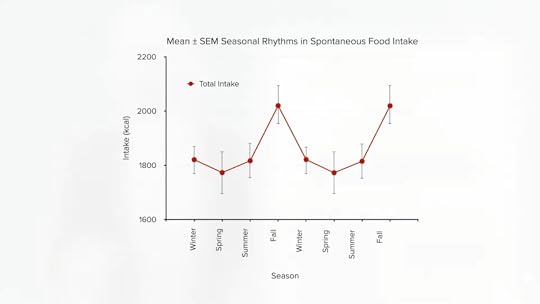
It’s remarkable that, in this day and age of modern lighting and heating, our bodies would still pick up enough environmental cues of the changing seasons to have such a major influence on our eating patterns. Unsurprisingly, bright light therapy is used to treat seasonal affective disorder, nearly tripling the likelihood of remission, compared to placebo. Though it’s never been tested directly, it can’t hurt to take the dog out for some extra morning and daytime walks in the fall to try to fend off some of the coming holiday season weight gain.
People blame the holidays for overeating, but it may be that “rather than the holidays causing heightened intake, the seasonal heightening of intake in the fall may have caused the scheduling of holidays at that time.”
Regardless, as you can see below and at 2:15 in my video, other “specific recommendations for the prevention of obesity and metabolic syndrome by improving the circadian system health,” based on varying degrees of evidence, include: sleeping during the night and being active during the day; sleeping enough—at least seven or eight hours a night; early to bed, early to rise; and short naps are fine. (Contrary to popular belief, daytime napping does not appear to adversely impact sleep at night.) Also recommended: avoiding bright light exposure at night; sleeping in total darkness when possible; making breakfast or lunch your biggest meal of the day; not eating or exercising right before bed; and completely avoiding eating at night.
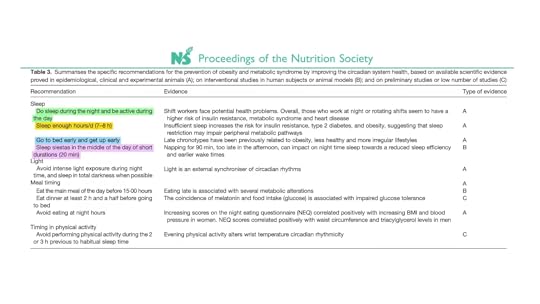 This was the last video in my chronobiology series. If you missed any of the others, check out the related posts below.
This was the last video in my chronobiology series. If you missed any of the others, check out the related posts below.
May 21, 2024
Phototherapy and Losing Weight
What did randomized controlled trials of phototherapy—bright morning light—for weight loss find?
If weakening our circadian rhythm can cause weight gain, might strengthening it facilitate weight loss? You may remember the child’s swing analogy I shared previously. Regular morning meals can give our cycles a little daily push, but the biggest shove comes from our exposure to bright morning light. Similarly, exposure to light at night could be analogous to nighttime eating, as you can see below and at 0:31 in my video Shedding Light on Shedding Weight.

Of course, we’ve had candles to illuminate our nights for 5,000 years, but flames from candles, campfires, and oil lamps are “strongly skewed towards the red end of the [light] spectrum; as a result, firelight has much less impact on circadian rhythmicity than electric light.” It’s the shorter blue wavelengths that specially set our circadian clocks. Electric lighting, which we’ve only had for a little over a century, “has gradually changed since the 1960s from an incandescent-bulb form consisting of mainly low-level yellow wavelengths to high-intensity discharge forms,” such as fluorescents and LED lights, “that contain blue wavelengths,” which are more similar to morning sunlight and have the strongest effect on our circadian rhythm.
Using wrist meters to measure ambient light exposure, researchers found that increased exposure to light in the evening and nighttime correlated with a subsequent increased risk of developing obesity over time. This was presumed to be due to circadian misalignment, but might it instead be a sign of not sleeping as much, and maybe that’s the real reason people grew heavier? This was controlled for in a study of more than 100,000 women, which found that the odds of obesity trended with higher nighttime light exposure independent of sleep duration.
Compared to women who reported their bedrooms at night were either too dark to see their hand in front of their face or at least dark enough that they couldn’t see across the room, those who reported their bedrooms were light enough to see across the room were significantly heavier. They weren’t all sleeping with nightlights on either. Without blackout curtains on windows, many neighborhoods may be bright enough to cause circadian disruption. Using satellite imagery, scientists have even been able to correlate higher obesity rates with brighter communities. There’s so much light at night these days that, outside of a blackout, the only Milky Way our children will likely ever see is inside a candy wrapper.
Although sleep quantity could be controlled, what about sleep quality? Maybe people sleeping in bedrooms that aren’t as dim don’t sleep as soundly, leaving them too tired to exercise the next day, for example. You can’t know for sure if nocturnal light exposure is harmful in and of itself until you put it to the test. When that was done, those randomized to exposure to bright light for a few hours in the evenings or exposed even just for a single night suffered adverse metabolic consequences.
The more intriguing question then becomes: Can circadian syncing with morning bright light therapy be a viable weight-loss strategy? Insufficient morning light may be the circadian equivalent of skipping breakfast. Indoor lighting is too bright at night, but it may be too dim during the day to robustly boost our daily rhythm. Light exposure from getting outdoors in the morning, even on an overcast day, is correlated to lower body weight compared to typical office lighting, so some doctors started trying “phototherapy” to treat obesity. The first case reports began being published in the 1990s. Three out of four women lost an average of about four pounds over six weeks of morning bright light exposure, but there was no control group to confirm the effect.
Ten years later, the first randomized controlled trial was published. Overweight individuals were randomized to an exercise intervention with or without an hour a day of bright morning light. Compared to normal indoor lighting, the bright light group lost more body fat, but it’s possible the light just stimulated them to exercise harder. Studies show that exposure to bright light, even the day prior to exercise, may boost performance. In a handgrip endurance test, exposure to hours of bright light increased the number of contractions until exhaustion from about 770 to 860 the next day. While light-induced improvements in activity or mood can be helpful in their own right, it would be years later still before we finally learned whether the light exposure itself could boost weight loss.
Following an unpublished study in Norway purporting to show a dozen-pound weight-loss advantage to eight weeks of 30 minutes of daily daylight (compared to indoor lighting), researchers tried three weeks of 45 minutes of morning bright light compared to the same time sitting in front of an “ion generator” that appeared to turn on but was secretly deactivated. As you can see in the graph below and at 5:08 in my video, the three weeks of light beat out the placebo, but the average difference in body fat reduction was only about a pound. This slight edge didn’t seem to correlate with mood changes, but bright light alone can stimulate serotonin production in the human brain and cause the release of adrenaline-type hormones, both of which could benefit body fat aside from any circadian effects.
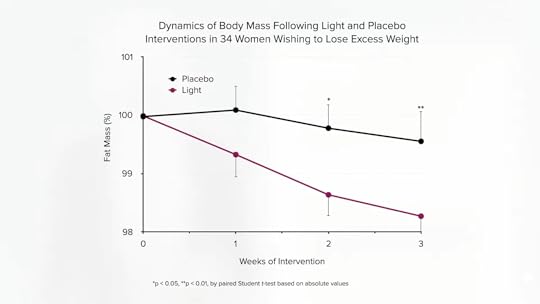
Regardless of the mechanism, bright morning daylight exposure could present a novel weight-loss strategy straight out of the clear blue sky.
I have a whole series on chronobiology. You can see all of the videos on the topic page. The last few are listed below in the related posts and help to paint the full picture of how our environment can affect our circadian rhythms.
For more on weight loss, you can also check out my recent series in the related posts below, or browse all of my weight loss videos here.
May 16, 2024
The Truth About Heart Stents
Coronary artery disease, the number one killer of men and women, involves blockages in the blood vessels that supply the heart muscle. As discussed in my video Do Angioplasty Heart Stent Procedures Work?, low blood flow can lead to a type of chest pain called angina or, if severe enough, a heart attack. Plant-based diets and lifestyle programs have been shown to help reverse these blockages by treating the cause of why our arteries are clogging up in the first place. But, for those unable or unwilling to change their diets, there are drugs that may help, as well as more invasive surgical treatments.
What Is a Heart Stent?You may have heard of open-heart surgery, performed to try to bypass the blockage, or percutaneous coronary intervention. As discussed in my video Why Angioplasty Heart Stents Don’t Work Better, historically, the more common procedure was angioplasty, wherein a tiny balloon is inserted into a narrowed coronary artery feeding your heart to force it to open wider to improve blood flow. Then, stents came into vogue. Instead of just ballooning up the artery, how about permanently inserting a metal mesh tube to prop open the artery? Stents are typically inserted in the groin and threaded all the way up into the heart, and, while stents used to be mostly bare metal, there are now fancy new drug-eluting stents that not only force open arteries, but they also slowly release pharmaceuticals.

The surgical procedure carries risks—including death. In an emergency setting, while you’re actively having a heart attack, angioplasty can be lifesaving, but hundreds of thousands of these procedures are for stable coronary artery disease, for which there appears to be little or no benefits. As discussed in my video The Risks of Heart Stents, doctors appear to be killing or stroking out thousands of people a year for nothing, and that isn’t even counting the tens of thousands of silent mini-strokes caused by these procedures that may contribute to cognitive decline. Indeed, 11 to 17 percent of people who go through angioplasty or stenting come away with new brain lesions—up to one in six patients.
Do Stents Work?Angioplasty and stents for non-emergency coronary artery disease are among the most common invasive procedures performed in the United States. Millions of people have gotten stents for stable coronary artery disease, yet it now appears that for such patients, angioplasty and stent placement do not actually prevent heart attacks, do not offer long-term angina pain relief, and do not improve survival. Why? Because the most dangerous plaques—the ones most vulnerable to rupture leading to a heart attack—are not the ones doctors put stents into. They often aren’t the ones that are even seen on angiogram to be obstructing blood flow.
Indeed, in 2007, we learned from the COURAGE trial that angioplasty and stents don’t reduce the risk of death or heart attack, but patients didn’t seem to get the memo. As discussed in my video Why Are Stents Still Used If They Don’t Work?, only 1 percent realize there was no mortality or heart attack benefit, perhaps because most cardiologists failed to happen to mention that fact. One can imagine that if patients actually understood all they were getting was symptomatic relief, they’d be less likely to go under the knife. Ten years later, the ORBITA trial was published, showing even the promise of symptom relief was an illusion.
Are Stents Really Necessary?The implications are profound and far-reaching. First and foremost, the results showed unequivocally that there are no benefits to non-emergency angioplasty and stents for stable heart disease. Basically, patients would be risking harm for no benefit whatsoever, so it’s hard to imagine a scenario where a fully-informed patient would choose an invasive procedure for nothing.
Yet angioplasty and stent placement continue to be frequently performed for patients with non-emergency coronary artery disease, despite clear evidence that it provides minimal benefit, as discussed in my video Angioplasty Heart Stent Risks vs. Benefits. For example, it does not prevent heart attacks or death, yet as many as nine out of ten patients mistakenly believed that the procedure would reduce their chances of having a heart attack.
What Are the Side Effects of Heart Stents?Stent placement and the blood-thinner drugs you have to go on after the surgery can cause complications, including heart failure, stroke, and death. The risks are relatively low; there’s less than a 1 percent chance it will kill you or stroke you out. The 15 percent risk of heart attack is only if your stent clogs at a later date, which only happens about 1 percent of the time in the near-term. There is a 13 percent risk of kidney injury, due to the dyes that must be injected, but that typically heals on its own. The most serious complications—including death—only happen in about 1 in 150 cases. However, you have to multiply that by the fact that hundreds of thousands of these procedures are performed every year.
And, again, although stents appeared to offer immediate relief of angina chest pain in stable patients with coronary artery disease, they do not offer long-term angina pain relief and they didn’t actually translate into lower risk of heart attack or death. More on this in my video Do Heart Stent Procedures Work for Angina Chest Pain?.
Diet After Heart Attack and StentsShould we be surprised that angioplasty and stents fail to improve prognosis? After all, neither does anything to modify the underlying disease process itself. In other words, they don’t treat the cause. As discussed in my video Heart Stents and Upcoding: How Cardiologists Game the System, even if stents helped with symptoms beyond the placebo effect, they would still just be treating the symptoms, not the disease, so it’s no wonder the disease continues to progress until the patient is disabled into death.
Thankfully, we are on the cusp of a seismic revolution in health: not another pill, procedure, or operation, but, instead, treating the underlying cause of heart disease with whole food, plant-based nutrition, the mightiest tool medicine has ever had in its toolbox.
Heart-Healthy EatingThe most likely reason the majority of our loved ones will die is heart disease. Atherosclerosis, or hardening of the arteries, begins in childhood, as discussed in my video How Not to Die from Heart Disease. The arteries of nearly all kids raised on the standard American diet already have fatty streaks marking the first stage of the disease—by the time they are ten years old. After that, the plaques start forming in our 20s, get worse in our 30s, and can then start killing us off. In our heart, it’s called a heart attack; in our brain, it can manifest as a stroke. So, for anyone reading this who is older than ten, the choice isn’t whether or not to eat healthfully to prevent heart disease—it’s whether or not you want to reverse the heart disease you likely already have.
Is that even possible? When researchers took people with heart disease and put them on the kind of plant-based diet followed by populations who did not get epidemic heart disease, their hope was that it might slow down the disease process or maybe even stop it. Instead, something miraculous happened. The disease actually started to reverse. It started to get better. As soon as patients stopped eating artery-clogging diets, their bodies were able to start dissolving away some of the plaque, opening up arteries without drugs and without surgery, suggesting their bodies wanted to heal all along, but just were never given the chance. That improvement in blood flow to the heart muscle itself was after just three weeks of eating healthfully.
Plant-based diets aren’t just safer and cheaper. They can work better because they let us treat the actual cause of the disease.
May 14, 2024
Irregular Meals, Night Shifts, and Metabolic Harms
What can shift workers do to moderate the adverse effects of circadian rhythm disruption?
Shift workers may have higher rates of death from heart disease, stroke, diabetes, dementia, and cardiovascular disease, as well as higher rates of death from cancer. Graveyard shift, indeed! But, is it just because they’re eating out of vending machines or not getting enough sleep? Highly controlled studies have recently attempted to tease out these other factors by putting people on the same diets with the same sleep—but at the wrong time of day. Redistributing eating to the nighttime resulted in elevated cholesterol and increases in blood pressure and inflammation. No wonder shift workers are at higher risk. Shifting meals to the night in a simulated night-shift protocol effectively turned about one-third of the subjects prediabetic in just ten days. Our bodies just weren’t designed to handle food at night, as I discuss in my video The Metabolic Harms of Night Shifts and Irregular Meals.
Just as avoiding bright light at night can prevent circadian misalignment, so can avoiding night eating. We may have no control over the lighting at our workplace, but we can try to minimize overnight food intake, which has been shown to help limit the negative metabolic consequences of shift work. When we finally do get home in the morning, though, we may disproportionately crave unhealthy foods. In one experiment, 81 percent of participants in a night-shift scenario chose high-fat foods, such as croissants, out of a breakfast buffet, compared to just 43 percent of the same subjects during a control period on a normal schedule.
Shiftwork may also leave people too fatigued to exercise. But, even at the same physical activity levels, chronodisruption can affect energy expenditure. Researchers found that we burn 12 to 16 percent fewer calories while sleeping during the daytime compared to nighttime. Just a single improperly-timed snack can affect how much fat we burn every day. Study subjects eating a specified snack at 10:00 am burned about 6 more grams of fat from their body than on the days they ate the same snack at 11:00 pm. That’s only about a pat and a half of butter’s worth of fat, but it was the identical snack, just given at a different time. The late snack group also suffered about a 9 percent bump in their LDL cholesterol within just two weeks.
Even just sleeping in on the weekends may mess up our metabolism. “Social jetlag is a measure of the discrepancy in sleep timing between our work days and free days.” From a circadian rhythm standpoint, if we go to bed late and sleep in on the weekends, it’s as if we flew a few time zones west on Friday evening, then flew back Monday morning. Travel-induced jet lag goes away in a few days, but what might the consequences be of constantly shifting our sleep schedule every week over our entire working career? Interventional studies have yet put it to the test, but population studies suggest that those who have at least an hour of social jet lag a week (which may describe more than two-thirds of people) have twice the odds of being overweight.
If sleep regularity is important, what about meal regularity? “The importance of eating regularly was highlighted early by Hippocrates (460–377 BC) and later by Florence Nightingale,” but it wasn’t put to the test until the 21st century. A few population studies had suggested that those eating meals irregularly were at a metabolic disadvantage, but the first interventional studies weren’t published until 2004. Subjects were randomized to eat their regular diets divided into six regular eating occasions a day or three to nine daily occasions in an irregular manner. Researchers found that an irregular eating pattern can cause a drop in insulin sensitivity and a rise in cholesterol levels, as well as reduce the calorie burn immediately after meals in both lean and obese individuals. The study participants ended up eating more, though, on the irregular meals, so it’s difficult to disentangle the circadian effects. The fact that overweight individuals may overeat on an irregular pattern may be telling in and of itself, but it would be nice to see such a study repeated using identical diets to see if irregularity itself has metabolic effects.
Just such a study was published in 2016: During two periods, people were randomized to eat identical foods in a regular or irregular meal pattern. As you can see in the graph below and at 4:47 in my video, during the irregular period, people had impaired glucose tolerance, meaning higher blood sugar responses to the same food.

They also had lower diet-induced thermogenesis, meaning the burning of fewer calories to process each meal, as seen in the graph below and at 4:55 in my video.
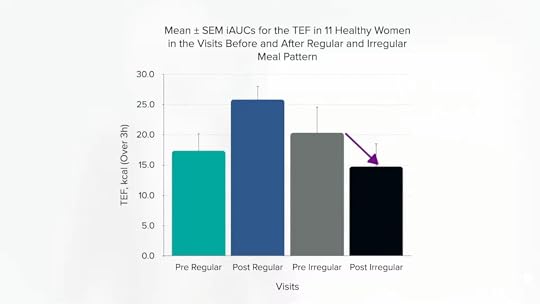
The difference in thermogenesis only came out to be about ten calories per meal, though, and there was no difference in weight changes over the two-week periods. However, diet-induced thermogenesis can act as “a satiety signal.” The extra work put into processing a meal can help slake one’s appetite. And, indeed, “lower hunger and higher fullness ratings” during the regular meal period could potentially translate into better weight control over the long term.
The series on chronobiology is winding down with just two videos left in this series: Shedding Light on Shedding Weight and Friday Favorites: Why People Gain Weight in the Fall.
If you missed any of the other videos, see the related posts below.
May 9, 2024
How Healthy Are Ancient Grains?
Ancient types of wheat, like kamut, are put to the test for inflammation, blood sugar, and cholesterol control.
The number one killer in the United States and around the world is what we eat. As you can see in the graph below and at 0:15 in my video Friday Favorites: Are Ancient Grains Healthier?, our diet kills millions more than tobacco. What are the five most important things we can do to improve our diets, based on the single most comprehensive global study of the health impact of nutrition? Eat less salt, eat more nuts, eat more non-starchy vegetables, eat more fruit, and, finally, eat more whole grains. 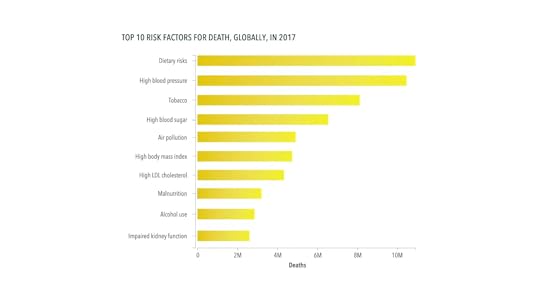 Any particular type of whole grains? What about so-called ancient grains? Are they any better than modern varieties? For instance, what about kamut, described as “mummy wheat” and supposedly unearthed from an Egyptian tomb?
Any particular type of whole grains? What about so-called ancient grains? Are they any better than modern varieties? For instance, what about kamut, described as “mummy wheat” and supposedly unearthed from an Egyptian tomb?
After WWII, the wheat industry selected particularly high-yielding varieties for pasta and bread. Over the past few years, though, some of the more ancient grains—“defined as those species that have remained unchanged over the last hundred years” despite agricultural revolutions—have been reintroduced to the market.
As you can see below and at 1:13 in my video, nutritionally, kamut and einkorn wheat, which is the oldest wheat, have more eyesight-improving yellow carotenoid pigments, such as lutein and zeaxanthin, compared to modern bread and pastry wheat, because the pigments have been bred out of the bread intentionally. People want their white bread white, but modern pasta flour (durum wheat) maintains much of that yellow nutritional hue.
 As you can see in the graph below and at 1:41 in my video, modern wheat may have less lutein, but it tends to have more vitamin E, as seen in the graph below and at 1:45. Based on straight vitamin and mineral concentrations, it’s pretty much a wash. Both modern and primitive kinds of wheat have a lot of each, but primitive wheats do have more antioxidant capacity, likely due to their greater polyphenol content, as you can see in the graph below and at 2:00 in my video. To know if that makes any difference, though, we have to put it to the test.
As you can see in the graph below and at 1:41 in my video, modern wheat may have less lutein, but it tends to have more vitamin E, as seen in the graph below and at 1:45. Based on straight vitamin and mineral concentrations, it’s pretty much a wash. Both modern and primitive kinds of wheat have a lot of each, but primitive wheats do have more antioxidant capacity, likely due to their greater polyphenol content, as you can see in the graph below and at 2:00 in my video. To know if that makes any difference, though, we have to put it to the test.
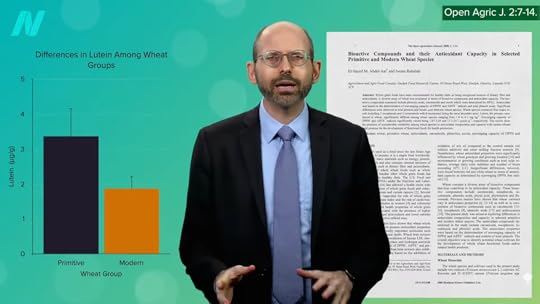
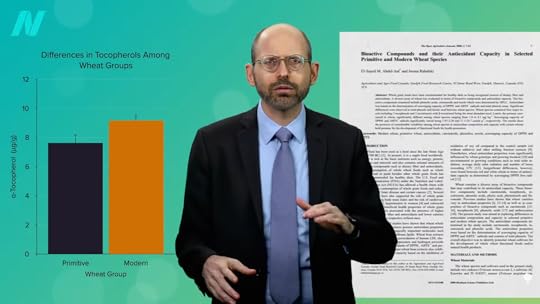
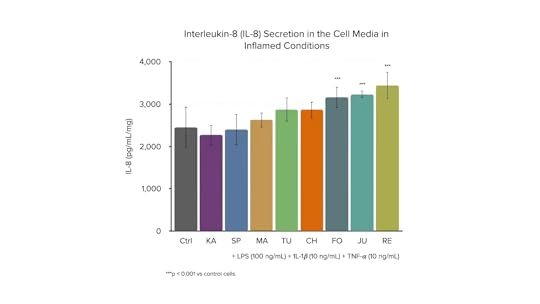
If you expose human liver cells to digested bread made out of ancient grains (kamut and spelt), heritage kinds of wheat, or modern strains, then expose the cells to an inflammatory stimulus, the modern wheat strains seem less able to suppress the inflammation, as you can see in the graphs below and at 2:09 in my video. The investigators conclude that even though these different grains seem to be very similar nutritionally, they appear to exert different effects on human cells, “confirming the potential health benefits of ancient grains.”  That was in a petri dish, though. What about people? If ancient kinds of wheat are better at suppressing inflammation, what if you took people with irritable bowel syndrome (IBS) and randomized them to receive six weeks of wheat products made out of modern wheat or ancient wheat—in this case, kamut? Same amount of wheat, just different types. If there is no difference between the wheats, there’d be no difference in people’s symptoms, right? But, when study participants in the control group were switched to the ancient wheat kamut, they experienced less abdominal pain, less frequent pain, less bloating, more satisfaction with stool consistency, and less interference with their quality of life, compared to the modern wheat. So, after switching to the ancient wheat, they had “a significant global improvement in the extent and severity of symptoms related to IBS…”
That was in a petri dish, though. What about people? If ancient kinds of wheat are better at suppressing inflammation, what if you took people with irritable bowel syndrome (IBS) and randomized them to receive six weeks of wheat products made out of modern wheat or ancient wheat—in this case, kamut? Same amount of wheat, just different types. If there is no difference between the wheats, there’d be no difference in people’s symptoms, right? But, when study participants in the control group were switched to the ancient wheat kamut, they experienced less abdominal pain, less frequent pain, less bloating, more satisfaction with stool consistency, and less interference with their quality of life, compared to the modern wheat. So, after switching to the ancient wheat, they had “a significant global improvement in the extent and severity of symptoms related to IBS…”
What about liver inflammation? The liver function of those with nonalcoholic fatty liver disease randomized to eat kamut improved, compared to those eating the same amount of regular wheat, suggesting kamut is superior, as you can see below and at 3:47 in my video.
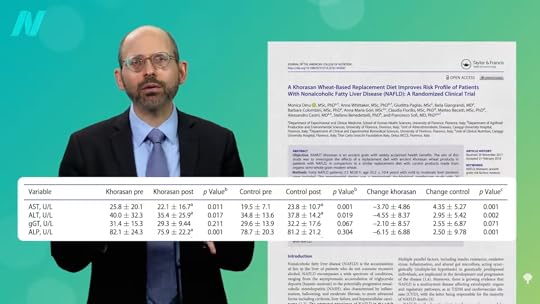
People with diabetes, had better cholesterol and better insulin sensitivity on the same ancient grain, as shown below and at 3:57.

And those with heart disease? They had better blood sugar control and better cholesterol, as shown below and at 4:03.

And, people without overt heart disease had better artery function, as you can see below and at 4:06 in my video.
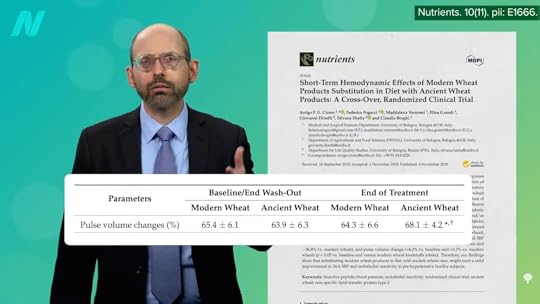
The bottom line is that findings derived from human studies suggest that ancient wheat products are more anti-inflammatory and may improve things like blood sugar control and cholesterol. “Given that the overall number of human interventional trials conducted to date are numerically insufficient, it is not possible to definitively conclude that ancient wheat varieties are superior to all commercial, modern wheat counterparts in reducing chronic disease risk.” However, the best available data do suggest they’re better for us.
Regardless of what type of wheat you may eat, a word to the wise: Don’t eat the plastic bread-bag clip. A 45-year-old man presented with bloody stools, and his CT scan showed the offending piece of plastic from his bag of bread, as you can see below and at 4:53 in my video. When the patient was questioned, he “admitted to habitually eating quickly without chewing properly.”

Whole grains—ideally intact ones and ancient and modern varieties alike—are an integral part of my Daily Dozen checklist, the healthiest of healthy things I encourage everyone to try to fit into their daily routines.
Whole grains are especially good for our microbiome. Learn more in the related posts below. What about gluten? Also, see the related posts below.
May 7, 2024
Syncing Your Brain and Body Clocks
Exposure to bright light synchronizes the central circadian clock in our brain, whereas proper meal timing helps sync the timing of different clock genes throughout the rest of our body.
One of the most important breakthroughs in recent years has been the discovery of “peripheral clocks.” We’ve known for decades about the central clock—the so-called suprachiasmatic nucleus. It sits in the middle of our brain right above the place where our optic nerves cross, allowing it to respond to day and night. Now we also know there are semi-autonomous clocks in nearly every organ of our body. Our heart runs on a clock, our lungs run on one, and so do our kidneys, for instance. In fact, up to 80 percent of the genes in our liver are expressed in a circadian rhythm.
Our entire digestive tract is, too. The rate at which our stomach empties, the secretion of digestive enzymes, and the expression of transporters in our intestinal lining for absorbing sugar and fat all cycle around the clock. So, too, does the ability of our body fat to sop up extra calories. The way we know these cycles are driven by local clocks, rather than being controlled by our brain, is that you can take surgical biopsies of fat, put them in a petri dish, and watch them continue to rhythm away.
All of this clock talk is not just biological curiosity. Our health may depend on keeping all of them in sync. “Imagine a child playing on a swing.” Picture yourself pushing, but you become distracted by what’s going on around you in the playground and stop paying attention to the timing of the push. So, you forget to push or you push too early or too late. What happens? Out of sync, the swinging becomes erratic, slows, or even stops. That is what happens when we travel across multiple time zones or have to work the night shift.
The “pusher” in this case is the light cues falling onto our eyes. Our circadian rhythm is meant to get a “push” from bright light every morning at dawn, but if the sun rises at a different time or we’re exposed to bright light in the middle of the night, this can push our cycle out of sync and leave us feeling out of sorts. That’s an example of a mismatch between the external environment and our central clock. Problems can also arise from a misalignment between the central clock in our brain and all the other organ clocks throughout our body. An extreme illustration of this is a remarkable set of experiments suggesting that even our poop can get jet lag.
As you can see below and at 2:31 in my video How to Sync Your Central Circadian Clock to Your Peripheral Clocks, our microbiome seems to have its own circadian rhythm.

Even though the bacteria are down where the sun doesn’t shine, there’s a daily oscillation in both bacterial abundance and activity in our colon, as you can see in the graph below and at 2:43 in my video. Interesting, but who cares? We all should.

Check this out: If you put people on a plane and fly them halfway around the world, then feed their poop to mice, those mice grow fatter than mice fed preflight feces. The researchers suggest the fattening flora was a consequence of “circadian misalignment.” Indeed, several lines of evidence now implicate “chronodisruption”—the state in which our central and peripheral clocks diverge out of sync—as playing a role in conditions such as premature aging and cancer, as well as ranging to others like mood disorders and obesity.
Exposure to bright light is the synchronizing swing pusher for our central clock. What drives our internal organ clocks that aren’t exposed to daylight? Food intake. That’s why the timing of our meals may be so important. Researchers removed all external timing cues by keeping study participants under constant dim light and found that you could effectively decouple central rhythms from peripheral ones just by shifting meal times. They took blood draws every hour and biopsies of the subjects’ fat every six hours to demonstrate the resulting metabolic disarray.
Just as morning light can help sync the central clock in our brain, morning meals can help sync our peripheral clocks throughout the rest of our body. Skipping breakfast disrupts the normal expression and rhythm of these clock genes themselves, which coincides with adverse metabolic effects. Thankfully, they can be reversed. Take a group of habitual breakfast-skippers and have them eat three meals at 8:00 am, 1:00 pm, and 6:00 pm, and their cholesterol and triglycerides improve, compared to taking meals five hours later at 1:00 pm, 6:00 pm, and 11:00 pm. There is a circadian rhythm to cholesterol synthesis in the body, too, which is also “strongly influenced by food intake.” This is evidenced by the 95 percent drop in cholesterol production in response to a single day of fasting. That’s why a shift in meal timing of just a few hours can result in a 20-point drop in LDL cholesterol, thanks to eating earlier meals, as you can see below and at 5:00 in my video.
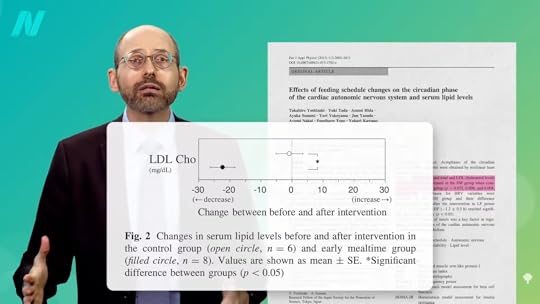
If light exposure and meal timing help keep everything synced, what happens when our circumstances prevent us from sticking to a normal daytime cycle? We’ll find out in The Metabolic Harms of Night Shifts and Irregular Meals. If you’re just coming into the series, be sure to check out the related posts below.
May 2, 2024
Explore NutritionFacts.org Resources
NutritionFacts.org has so many free resources to help you on your journey to a healthier life.
The Evidence-Based Eating Guide
The Evidence-Based Eating Guide: A Healthy Living Resource from Dr. Greger & NutritionFacts.org simplifies making the switch to a healthier lifestyle. It’s an easy-to-understand guide, bursting with information on eating more healthfully, including a breakdown of Dr. Greger’s Traffic Light Eating, tips for using his Daily Dozen Checklist, sample menus, and more.
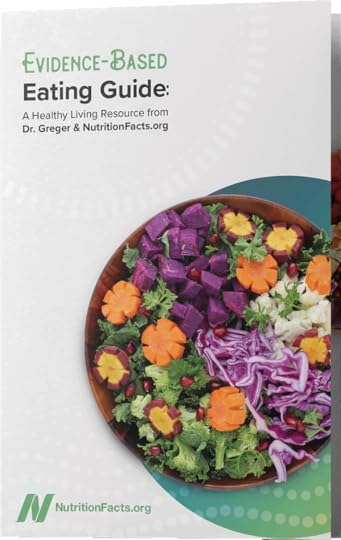


Daily Dozen Meal Planning Guide
The healthiest diet is one that maximizes the intake of foods-as-grown—whole, plant-based foods—and minimizes the consumption of processed and animal-based foods. In the first half of his book, How Not to Die, Dr. Greger covers the whys of eating healthfully, exploring diet’s role in the prevention, treatment, and sometimes even reversal of the fifteen leading causes of death in the United States. In the book’s second half, he dives into the hows of eating healthfully and shares his Daily Dozen checklist, grocery shopping tips, and meal planning ideas.
In our Daily Dozen Meal Planning Guide, we walk you through the steps for incorporating the Daily Dozen checklist into your life and give you additional strategies to help you build more healthful eating habits. Download your free copy of the guide today!

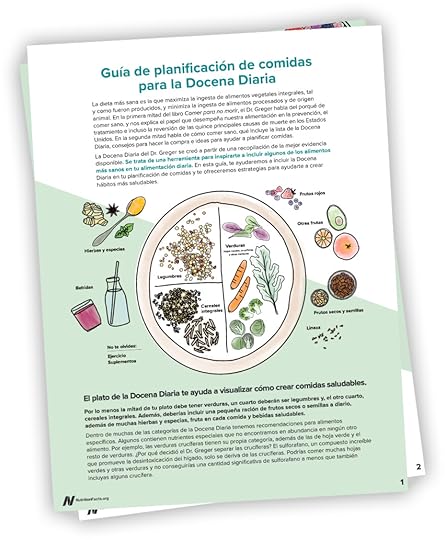

Infographics


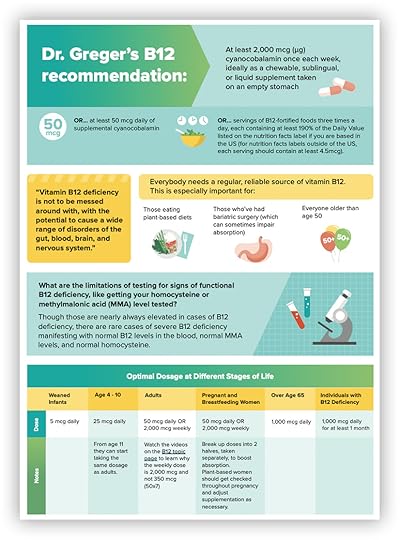
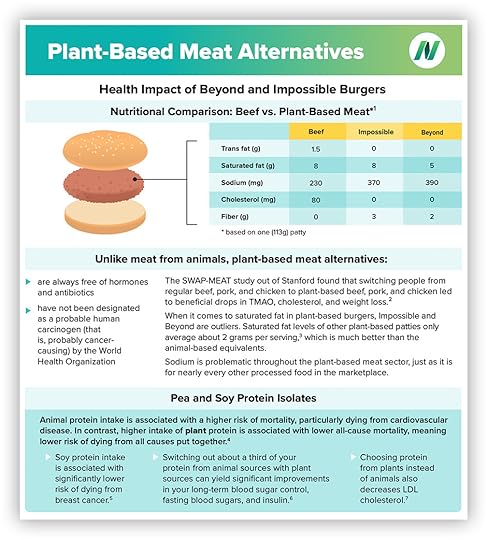
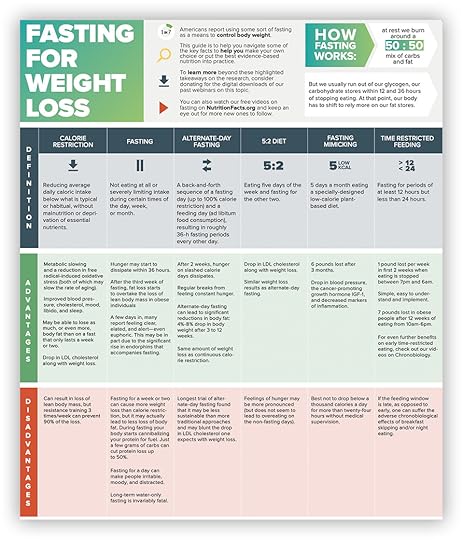
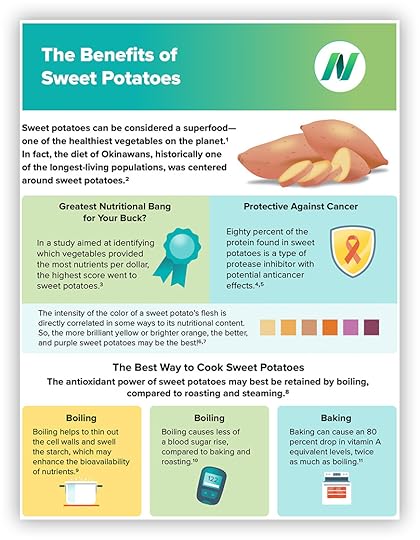
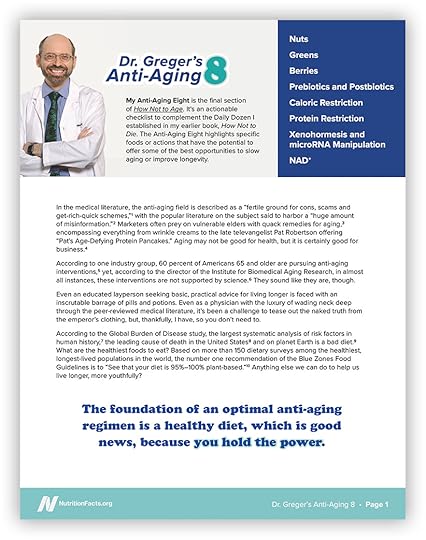
Interested in Spanish infographics?
Email SeriesWe offer three great email series to support you in living healthfully:
Join us for our How to Live Longer series, where we go through some of the most important information Dr. Greger uncovered on the science behind healthy aging. Sign up for this email series and learn how to live longer, vibrantly. Our Plant-Based Living weekly email series gives you simplified takeaways and actionable tips on healthy eating. Whether you’re new to a whole food, plant-based lifestyle or would benefit from reminders on some of the key aspects of evidence-based nutrition, this series is for you.Join us for 11 weeks of Daily Dozen support emails to help you Do the Dozen with ease. Optimum Nutrient RecommendationsCheck out our Optimum Nutrient Recommendations for more on vitamin B12, calcium, vitamin D, omega-3 fatty acids, iodine, iron, and selenium.
Topic PagesTo view all of our videos organized by topic, explore our topic pages.
Recipes
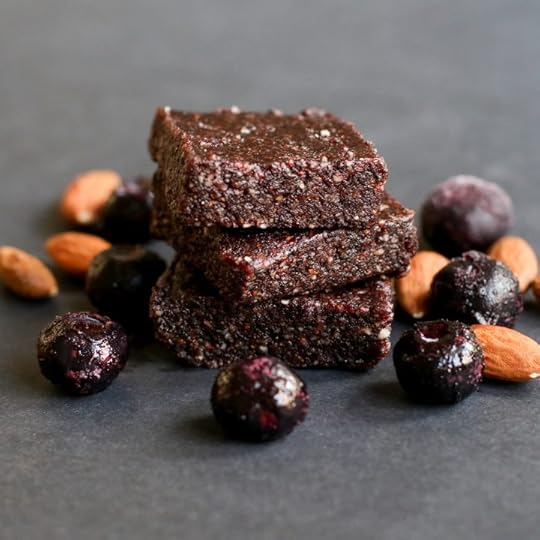
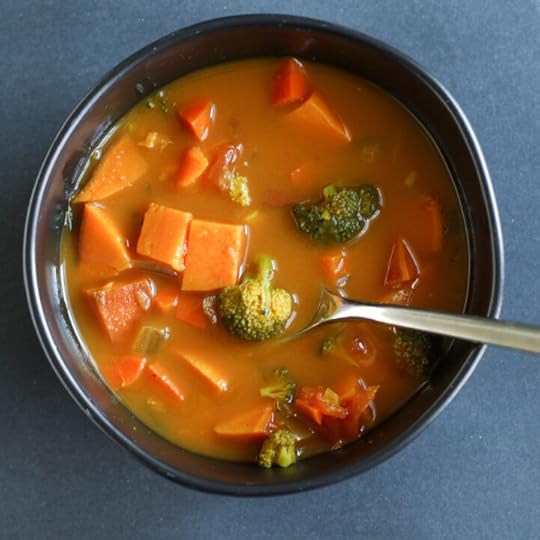

Each recipe in our collection uses only health-promoting ingredients, based on Dr. Greger’s Daily Dozen and dining by traffic light system. These whole food, plant-based dishes, sauces, condiments, and sides come from The How Not to Die Cookbook and The How Not to Diet Cookbook, part of Dr. Greger’s award-winning series, as well as contributions from the NutritionFacts.org team and friends.
Dr. Greger’s Live PresentationsFrom the comfort of your own home, join Dr. Greger as he dives into the content of each of his acclaimed books with these recordings of his live presentations.
PodcastListen to the Nutrition Facts with Dr. Greger podcast and take Dr. Greger with you in the car and on walks.
Live Q&AsJoin Dr. Greger live each month for an exciting Q&A. Sign up to our free newsletter to get the date and link directly in your inbox. You can also check out past Q&A sessions recordings.
WebinarsA few times a year, Dr. Greger hosts webinars on a wide range of topics, such as hearing loss, osteoporosis, vitamin K2, and potassium salt substitutes. Sign up for our free newsletter to receive the latest webinar updates. Don’t miss the chance to sign up for our upcoming CME-approved webinar on May 10.
Our monthly Patrons, Champions, and Benefactors receive a complimentary registration to Dr. Greger’s upcoming webinars and all newly released Latest in Clinical Nutrition Digital Downloads as long as their donations are current.

International Content
The entire NutritionFacts.org website has been translated into Spanish, and we also have Spanish Facebook and Instagram pages. On DrGreger.org, you’ll find shirts, stickers, and Evidence-Based Eating Guides in Spanish.
Check out our NutritionFacts in China page for links to all our Chinese content, including social media, books, and infographics. On DrGreger.org, we also have shirts and Evidence-Based Eating Guides in Chinese.
Dr. Greger’s books have been translated in many languages. Check out this page for more information.
Want to see all the NutritionFacts videos available in your language? Visit our search page and check out the ‘Subtitle Language’ menu on the right side or press the ‘Filters’ button if you’re on mobile. After you select your language, the results will list all the videos with subtitles available in that language. View this page for instructions on how to access subtitles and translations in our videos: Closed Captions and Translations.
Supporter Rewards and RecognitionAs a token of our gratitude, thank you gifts are available for each donation tier. You will have the opportunity to opt-in once your donation is made. Thank you!
Host a ScreeningShare the latest in evidence-based nutrition with your community by hosting a free screening of Dr. Greger’s “How Not to Die,” “Evidence-Based Weight Loss,“ or “How Not to Age” presentation. Each video runs for approximately one hour. Your free Digital Event Kit will include the video, an introduction to NutritionFacts, a fun trivia game for attendees (not included in the “How Not to Age” screening kit), and tips for hosting. Each screening event is approximately two hours long.
By providing this fun and educational event kit, we hope to make it easier than ever to spread the message about evidence-based eating.
VolunteerIf you are interested in volunteering with NutritionFacts.org, check out our open positions. Also, please consider subscribing to our Nutrition Mission Newsletter.
Speaking TourWant to see Dr. Greger in person and get your books signed? Check out his speaking tour calendar.
DrGreger.org
In the DrGreger.org store, you can find digital downloads of our video collections, shirts, and outreach material. The print versions of our English, Spanish, and Chinese Evidence-Based Eating Guides are 20% off through May 20, 2024.
If you missed Dr. Greger’s How Not to Age Book Club Webinar Series, the recording is available on DrGreger.org.
The Daily Dozen AppDownload the free Daily Dozen app today and start including some of the healthiest foods in your diet. Track your servings, analyze your progress, and learn along the way. The app is available in the App Store and Google Play.
April 30, 2024
Circadian Rhythms and Our Blood Sugar Levels
The same meal eaten at the wrong time of day can double blood sugar.
We’ve known for more than half a century that our glucose tolerance—the ability of our body to keep our blood sugars under control—declines as the day goes on. As you can see in the graph below and at 0:25 in my video How Circadian Rhythms Affect Blood Sugar Levels, if you hook yourself up to an IV and drip sugar water into your vein at a steady pace throughout the day, your blood sugars will start to go up at about 8:00 pm, even though you haven’t eaten anything and the infusion rate didn’t change.

The same amount of sugar is going into your system every minute, but your ability to handle it deteriorates in the evening before bouncing right back in the morning. A meal eaten at 8:00 pm can cause twice the blood sugar response as an identical meal eaten at 8:00 am, as shown in the graph below and at 0:51 in my video. It’s as if you ate twice as much. Your body just isn’t expecting you to be eating when it’s dark outside. Our species may have only discovered how to use fire about a quarter million years ago. We just weren’t built for 24-hour diners.

One of the tests for diabetes is called the glucose tolerance test, which sees how fast our body can clear sugar from our bloodstream. You swig down a cup of water with about four and a half tablespoons of regular corn syrup mixed in, then have your blood sugar measured two hours later. By that point, your blood sugar should be under 140 mg/dL. Between 140 and 199 is considered to be a sign of prediabetes, and 200 and up is a sign of full-blown diabetes, as you can see in the graph below and at 1:37 in my video.
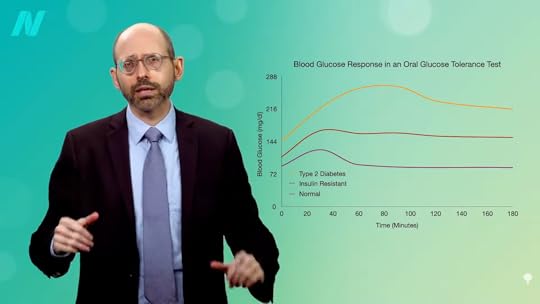
The circadian rhythm of glucose tolerance is so powerful that a person can test normal in the morning but as a prediabetic later in the day. Prediabetics who average 163 mg/dL at 7:00 am may test out as frank diabetics at over 200 mg/dL at 7:00 pm, as you can see in the graph below and at 1:53 in my video.
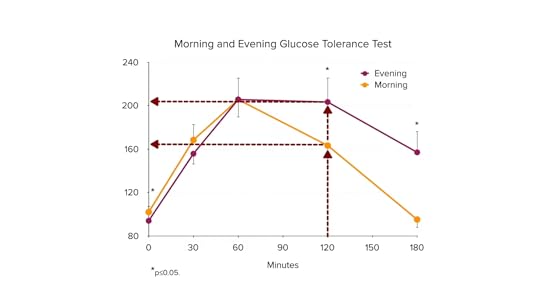
Choosing lower glycemic foods may help promote weight loss, but timing is critical. Due to this circadian pattern in glucose tolerance, a low-glycemic food at night can cause a higher blood sugar spike than a high-glycemic food eaten in the morning, as you can see below and at 2:05 in my video.
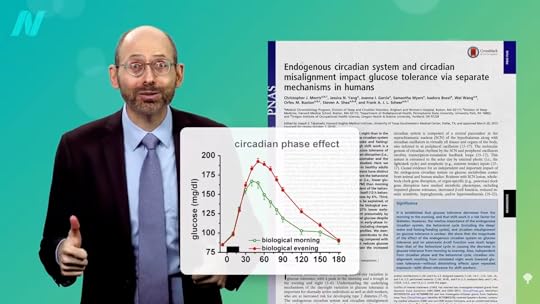
We’re so metabolically crippled at night that researchers found that eating a bowl of All Bran cereal at 8:00 pm caused as high a blood sugar spike as eating Rice Krispies at 8:00 am, as you can see in the graph below and at 2:23 in my video.

High glycemic foods at night would seem to represent the worst of both worlds. So, if you’re going to eat refined grains and sugary junk, it might be less detrimental in the morning, as you can see in the graph below and at 2:32 in my video.
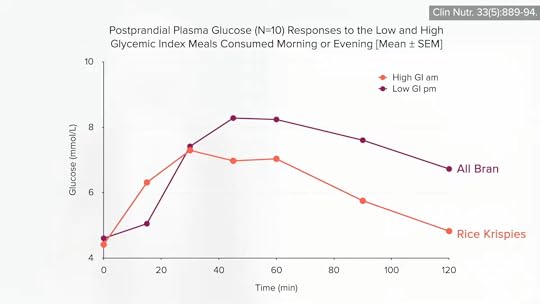
The drop in glucose tolerance over the day could therefore help explain the weight-loss benefits of frontloading calories towards the beginning of the day. Even just taking lunch earlier versus later may make a difference, as you can see in the graph below and at 2:48 in my video.

People randomized to eat a large lunch at 4:30 pm suffered a 46 percent greater blood sugar response compared to an identical meal eaten just a few hours earlier at 1:00 pm. A meal at 7:00 am can cause 37 percent lower blood sugars than an identical meal at 1:00 pm, as you can see below, and at 3:04 in my video.

Now, there doesn’t seem to be any difference between a meal at 8:00 pm and the same meal at midnight; they both seem to be too late, as you can see below, and at 3:15 in my video.

But, eating that late, at midnight or even 11:00 pm, can so disrupt your circadian rhythm that it can mess up your metabolism the next morning, resulting in significantly higher blood sugars after breakfast, compared to eating the same dinner at 6:00 pm the evening before, as shown in the graph below and at 3:32 in my video.
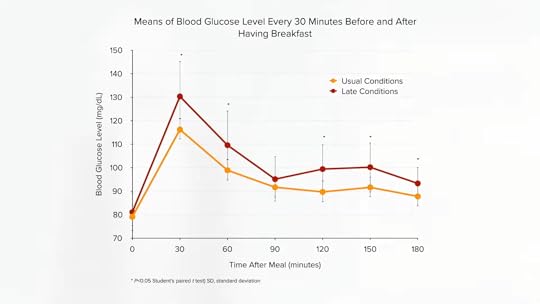
So, these revelations of chronobiology bring the breakfast debate full circle. Skipping breakfast not only generally fails to cause weight loss, but it worsens overall daily blood sugar control in both diabetic individuals and people who are not diabetic, as you can see in the graph below and at 3:44 in my video.

Below and at 3:53, you can see a graph showing how the breakfast skippers have higher blood sugars even while they’re sleeping 20 hours later. This may help explain why those who skip breakfast appear to be at higher risk of developing type 2 diabetes in the first place.
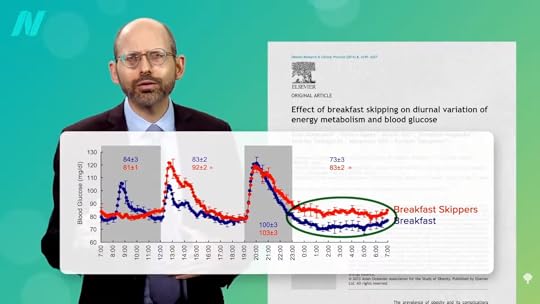
Breakfast skippers also tend to have higher rates of heart disease, as well as having higher rates of atherosclerosis, in general. Is this just because “skipping breakfast tends to cluster with other unhealthy choices, including smoking” and sicklier eating habits overall? The link between skipping breakfast and heart disease—even premature death in general—seems to survive attempts to control for these confounding factors, but you don’t really know until you put it to the test.
Does skipping breakfast lead to higher cholesterol, for example? Yes, researchers found a significant rise in LDL (bad) cholesterol in study participants randomized to skip breakfast; they were about 10 points higher within just two weeks, as you can see below and at 4:45 in my video.

The Israeli study with the caloric distribution of 700 calories for breakfast, 500 for lunch, and 200 for dinner that I’ve discussed previously found that the triglycerides of the king-prince-pauper group (those eating more at breakfast versus dinner) got significantly better—a 60-point drop—while those of the pauper-prince-king group got significantly worse (a 26-point rise). So, consuming more calories in the morning relative to the evening may actually have a triple benefit: more weight loss, better blood sugar control, and lower heart disease risk, as you can see below and at 5:18 in my video.
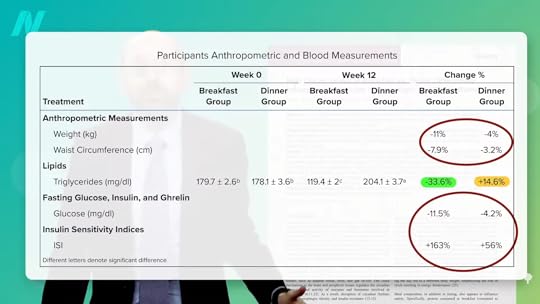
If you’re going to skip any meal, whether you’re practicing intermittent fasting or time-restricted feeding (where you try to fit all of your food intake into a certain time window each day), it may be safer and more effective to skip dinner rather than breakfast.
I’m back with the next installment of the chronobiology series! I previously explored eating breakfast for weight loss (Is Breakfast the Most Important Meal for Weight Loss? and Is Skipping Breakfast Better for Weight Loss?), introduced chronobiology (How Circadian Rhythms Can Control Your Health and Weight), and looked at the science on eating more in the mornings than the evenings (Eat More Calories in the Morning to Lose Weight, Breakfast Like a King, Lunch Like a Prince, Dinner Like a Pauper, and Eat More Calories in the Morning Than the Evening).
Next, you’ll see How to Sync Your Central Circadian Clock to Your Peripheral Clocks.
The series will wrap up in the next couple of weeks. See videos and blogs in related posts below.
Note: The Israeli 700/500/200 study that I mentioned is detailed in the Breakfast Like a King, Lunch Like a Prince, Dinner Like a Pauper video if you want to know more. Also, check the corresponding blog in related posts.
April 25, 2024
Brain-Boosting Grapes
Grape juice and whole grapes are put to the test for brain function, including cognitive decline in early Alzheimer’s.
In 2010, the first controlled trial was published that examined how the brain responds to grape juice. It helped aged rats, but what about people? “Concord grape juice supplementation improves memory function in older adults with mild cognitive impairment”—or so says the title. The problem is that the study was funded by Welch’s, and, though the authors claim they have no financial interest in the outcome, that seems disingenuous. I mean, do they think Welch’s would ever fund them again if they found grape juice wasn’t good for you? And, indeed, that title is a bit of industry spin. I’m sure that’s what they wanted to find.
Older adults with memory decline (but not dementia) were randomized into a placebo-controlled, double-blind trial with Concord grape juice versus a similarly looking and tasting Kool-Aid type of drink with the same calories and same sugars. That’s a solid study design. And, berries have those wonderful polyphenol phytonutrients, which have anti-inflammatory and antioxidant properties, so it certainly could help brain function and it did seem to help with verbal learning, as you can see in the graph below and at 1:21 in my video Friday Favorites: Benefits of Grapes for Brain Health.

The odds you’d get such notable results just by chance are like 1 in 25, whereas the higher recall scores are not considered to be statistically significant, since even if there wasn’t an effect, you might get those kinds of results by chance 1 in every 8 or 10 times you’d run the experiment, as shown in the graph below and at 1:38 in my video. And, by convention, we like at least 1 in 20—a p-value of 0.05 or less—especially if we’re looking at multiple outcomes, which increases the likelihood that something will pop up as a fluke. The bottom line is that we’re less confident in these memory outcomes. If this study hadn’t had industry funding, I imagine it would be titled more accurately. Perhaps “Concord grape juice supplementation improves verbal learning in older adults with mild cognitive impairment”—which is still an important finding, and we have the Welch’s corporation to thank for it. Without industry funding, a study like this might never get done.
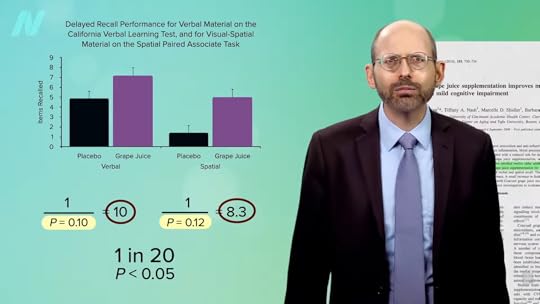
The findings suggest that drinking grape juice is superior to drinking a grape Kool-Aid type of beverage, not necessarily for helping memory, but maybe for helping with learning. When the study was repeated, though, it did seem to help one measure of memory, but no benefit was found for verbal learning, even when using the same test as before, which calls the previous results into question. So, we’re left uncertain about what effects, if any, grape juice has on the aging brain.
What about the brains of middle-aged mothers? The Welch’s-funded researchers noted significant improvements in one measure of memory and driving performance as measured in a fancy driving simulator, suggesting you might be able to stop a dozen yards earlier on the highway after drinking grape juice than if you had instead had a grape Kool-Aid type of drink. I do like how they tried to translate the cognitive effects into more meaningful metrics, but it’s important to acknowledge, as they did, that no effects were found for the majority of cognitive consequences. And, when you study 20 different outcomes, the odds are pretty good that you’d just get a statistically significant result or two by chance, as you can see below and at 3:33 in my video.
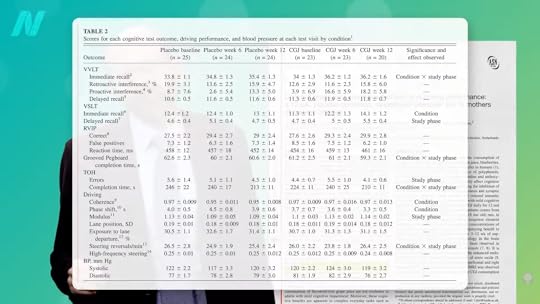
The latest study involved giving a single dose of a cup of purple grape juice or white grape juice (to which flavor and color had been added to disguise it) to young adults with an average age of 21. In this way, researchers could see if there’s something special about those deep purple polyphenol pigments in Concord grape juice. Their findings? They got the same kind of results: two cognitive measures just reaching statistical significance, but that’s out of seven different outcomes, as you can see below and at 4:12 in my video. So, instead of a p-value of 0.05 as the cut-off for significance, we’d really like to see closer to 0.007, and none hit that. Maybe it’s because they didn’t use whole food like in that blueberry study I profiled before.
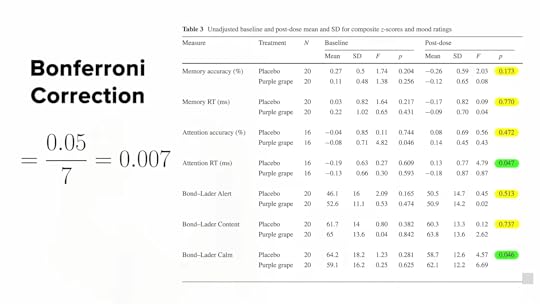
There was a study that looked at actual grape consumption by utilizing freeze-dried grape powder to capture the whole food (instead of just the juice) versus a sugar-matched placebo. The researchers used PET scans to track changes in brain metabolism associated with early Alzheimer’s in a group of older adults already suffering from mild cognitive decline. Although the changes couldn’t be picked up on neuropsychological testing, in those early-stage Alzheimer’s regions, the placebo group continued to worsen, but the grape group “was spared such decline,” suggesting a protective effect of grapes. You can see these points illustrated in a graph and brain mapping pictures below and from 5:11 in my video. You can see locations where brain metabolism declined after eating six months of placebo grapes (colored red in the video), compared to the level of decline in a brain after six months of eating actual grapes.

When commercial entities fund studies, it’s more for marketing purposes than science. That doesn’t necessarily mean the findings are invalid, but you do have to pay special attention to things like the framing of the research question, the experimental methods, statistical analysis, biased interpretation of results, or spin.
The blueberry video I mentioned is Flashback Friday: Benefits of Blueberries for the Brain. You may also be interested in the Benefits of Blueberries for Mood and Mobility.
What else might help protect brain function? Check out related posts below.



